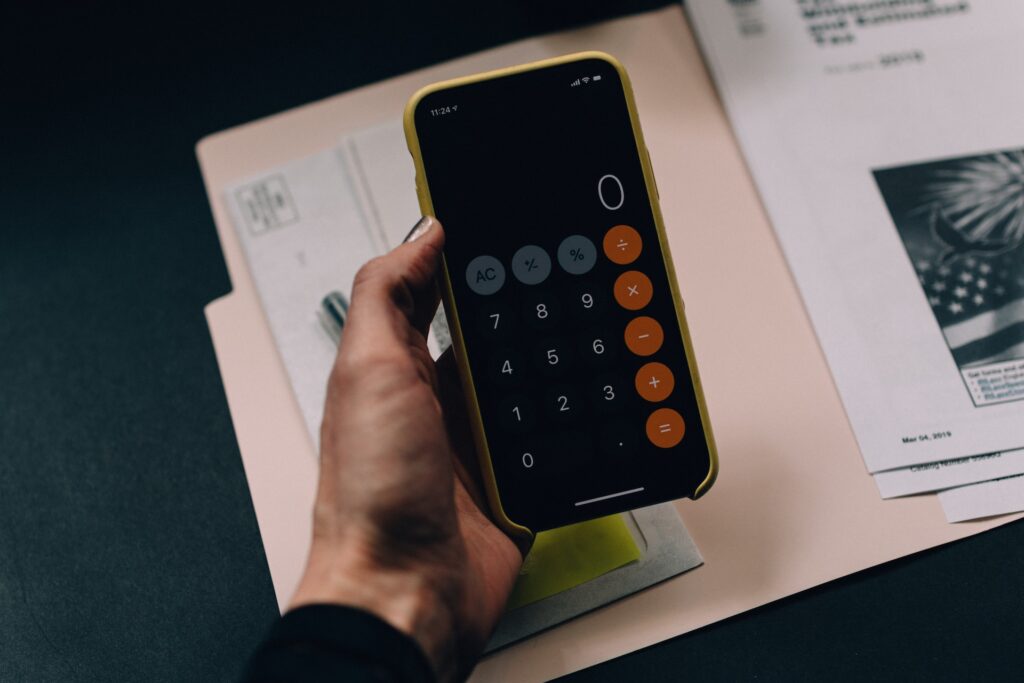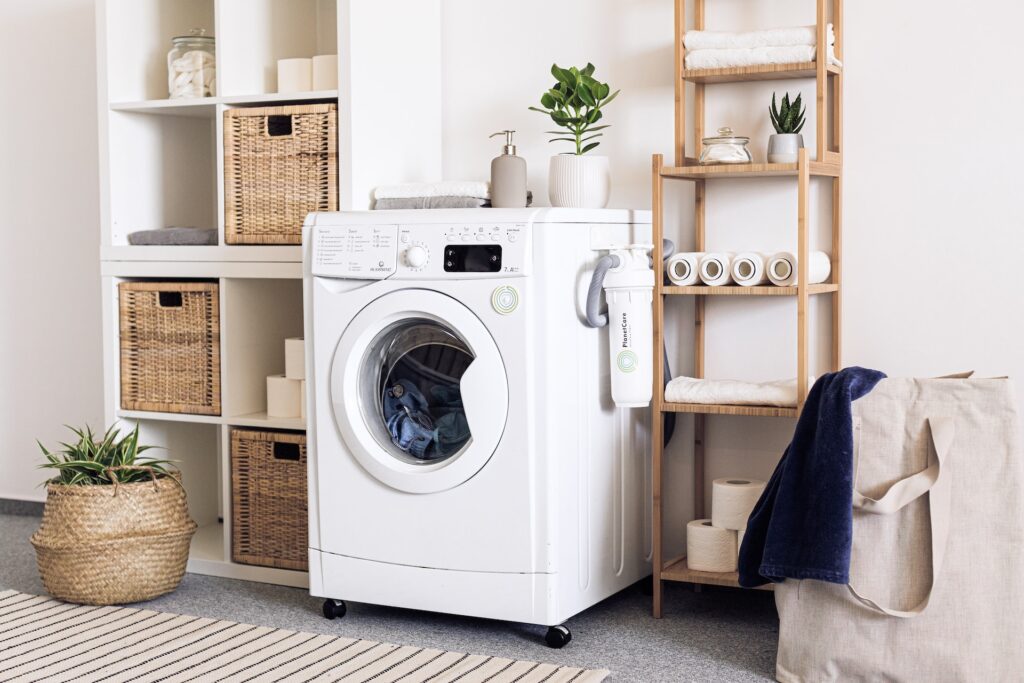Home Energy-Saving Tips: 10 Strategies for Lower Bills
As an Amazon Associate, I earn from qualifying purchases.
Disclosure: Some of the links in this article may be affiliate links, which can provide compensation to me at no cost to you if you decide to purchase a paid plan. You can read our affiliate disclosure in our privacy policy.
Home Energy-Saving Tips: 10 Strategies for Lower Bills
When it comes to saving money on your energy bill, the little things make a big difference. While it’s true that energy-efficient appliances and systems like solar panels can save you money over time, there are plenty of small changes you can make around your home to lower your energy use and reduce your bills.
In this article, I’ll give you the lowdown on ten strategies for reducing your energy costs. Whether you’re looking for simple ways to increase efficiency or more involved projects that will give you long-term savings, I’ve got you covered. So let’s get started and explore how even small changes can lead to big savings!
Start with an energy audit: Home Energy Audit for Savings
When it comes to saving on energy bills, knowledge really is power. An energy audit helps you pinpoint energy-inefficient processes in your home, giving you the information you need to start making meaningful changes.
What does a home energy audit involve? An assessor will come to your home and measure things like insulation levels, ventilation issues, appliance efficiency, and more. They’ll also take into account the unique features of your home—construction materials used in your walls and windows, for example—to make sure their recommendations are tailored to you.
At the end of the audit, you’ll know exactly what kind of improvements you need to make in order to save money on energy costs. Not only will this help lower bills in the long run — it may even result in a one-time cost savings if you’re able to get an energy rebate or tax credit based on any upgrades that you make.

Understanding your energy bills: reduce energy
Being able to understand your energy bills isn’t just important for planning your budget, but it’s also key to understanding how to reduce your home energy usage. So, without further ado, let’s explore the basics of reading an energy bill.
At their core, all energy bills contain two main pieces of information: the total amount due and how much energy was used. They also provide an estimated number of kilowatt-hours (kWh) used during a billing period and that is usually broken down into separate charges for electricity and/or gas used.
On gas bills, you may also find a breakdown of the different elements in your total bill such as basic charges or peak period charges or meter rental fees. You’ll often find additional information about discounts, payment plans or promotions included the bill as well.
By understanding exactly where your charges originate from you can make sure you’re paying only for what you need and move forward with more focused strategies for lowering your energy costs.
Switch to a Smart Thermostat: ways to save
If you’re looking for an easy way to save on energy costs, look no further than investing in a smart thermostat. Smart thermostats learn your habits and take over adjusting temperatures when you leave or come home. That means you don’t have to worry about manually turning off the heat while you’re gone. Not only is this convenient, but it also uses less energy and can help lower your electricity bill.
Plus, most smart thermostats come with Wi-Fi capability, so you can adjust them remotely via your smartphone or other device. You also get access to other cool features like reminders for filter changes, enabling geofencing so the system knows when you’ve left the house, and customizable settings for different times of day. With a smart thermostat in charge, you can rest assured that your home energy bills are as low as possible.
Invest in LED Light Bulbs: energy at home
One way to save energy and money in the long run is to invest in LED light bulbs. Not only do they last longer than traditional incandescent bulbs, but they also use about 85% less energy! That translates into big savings on your monthly electric bill.
Plus, LED light bulbs come in a variety of shapes and tones, so you don’t have to worry about sacrificing style for savings. You can find them in daylight white or cool white tones that match any décor, and you can even dim them if that’s your thing.
Some other advantages of LED light bulbs are their resistance to breakage and heat, so you don’t have to worry about the bulb overheating or shattering if it’s dropped. Besides all these benefits, in most cases LED light bulbs are eligible for rebates from your local energy provider—so be sure to check if your area has any available discounts!
Unplugging Household Appliances
When it comes to saving energy at home, one of the most overlooked strategies is unplugging unnecessary appliances and electronics. That’s because these things still draw power even when they’re not in use—which can cost you a lot over time.
So what should you unplug?
-
Entertainment systems
-
Coffee makers
-
Gaming consoles
-
Computers and printers
-
Toasters and microwaves
-
And anything else you don’t use regularly
Unplugging your household appliances can add up to some serious savings. According to recent studies, the average household can save $100 a year just by unplugging their unused devices—so why not give it a try today?

Monitor Your Energy Bill for Changes
You may not realize this, but monitoring your energy bill can be one of the most effective strategies for saving on energy costs. Paying attention to changes in your energy bills—especially seasonal ones—can help you identify any areas where you could stand to save. It’s also an opportunity to spot any errors or irregularities in your bills.
If your bills have been increasing, see if there’s anything you can do to cut back on energy usage. Consider turning off the lights when you leave a room, unplugging appliances when not in use, and keeping thermostats at reasonable temperatures (ideally between 68 and 78 degrees Fahrenheit). You should also look into replacing old or inefficient appliances with newer, more efficient ones whenever possible. These small adjustments can make a big difference when it comes to conserving energy.
Ultimately, tracking your bills and actively adjusting your usage habits can help keep costs down and protect the environment at the same time.
Use Natural Lighting
One of the most energy-efficient things you can do is maximize natural lighting. You don’t need to switch on the lights during the day, if you can let natural light fill your home. For instance, declutter windows and make sure they’re clean, so that light can come in easier. Plus, install suncatchers or light shelves to help direct sunlight into certain areas of your home.
Another way to make use of natural lighting is to remove unnecessary obstructions from your home. If there’s furniture blocking a window, move it somewhere else so that the room can be illuminated by the sunlight outside. Or consider installing skylights or bay windows—not only do they allow more natural light into your home but they also add architectural interest to a room!
Using natural lighting isn’t just good for saving energy—it’s also good for reducing stress levels and increasing productivity as you’re exposed to essential vitamins from sunlight! So what are you waiting for? Maximize natural lighting in your home now!
Unplug Unused Devices
When it comes to energy-saving tips, unplugging all of your unused devices and appliances is a great way to start. Not only is it good for your wallet, but unplugging your appliances and devices can also help reduce the amount of energy consumed in your home.
It may seem like a hassle, but it’s worth it in the long run. Studies have shown that an appliance or device left plugged in can still consume up to 85% of the power that’s needed for an appliance to operate when it’s switched on. So, even if you’re not using something like a laptop charger or printer, unplugging those items can go a long way towards helping you save energy and money.
Plus, there are easy ways to make this part of your daily routine:
-
Put all your device cords in one place and then disconnect them all when you’re done with them.
-
Make sure all devices are off—not just on standby mode—before unplugging them.
-
Connect multiple devices into a power strip so they can all be turned off at once before unplugging them from the wall outlet.
By taking the time to unplug everything after you’re done using it, you’ll be reducing wasted energy and helping to lower your monthly electricity bill.
Insulate Your Home
Another way you can save money on your energy bills is to make sure that your home is properly insulated. When it comes to insulation, the thicker the better, because it will be able to keep in the heat and air conditioning for longer.
Insulating your home will also make it more comfortable year-round, since you won’t have to worry about hot summer days or cold winter nights. And if you want to take it a step further, you can add window treatments like curtains and blinds to help block out sunlight during the summer months.
You can either hire a professional or do-it-yourself by purchasing materials from a local hardware store. Here’s what you should look for when shopping for insulation:
Types of Insulation
-
Fiberglass: comes in rolls or loose-fill and is used in walls, attics, and sometimes floors.
-
Cellulose: comes in loose-fill form and made from recycled paper products. Good for attics and walls.
-
Radiant Barrier: reflective material between roof rafters; helps keep heat out during summer months.
Benefits of Insulation
-
Creates a barrier against outdoor temperatures
-
Reduces energy costs
-
Reduces noise pollution from outside sources
By investing in insulation for your home, you’ll be saving money long term on energy bills while also creating a more comfortable living environment—win win!

Air Seal and Insulate Areas of Your Home
Areas of your home can be air sealed and insulated to trap the cool or warm air inside, and keep the environment comfortable. Doing this can help you save a bundle on your energy bills, since the air conditioning or heater won’t have to be used as often.
To get started you’ll need to find out where areas are leaking. For example, if you feel drafts near windows and doors, that’s a sign that you should investigate further. The attic is another area where sealing and insulating should be done—this space is usually full of cracks and openings that let out heated or cooled air.
Checking for leaks or gaps should also extend to other areas of your home such as walls, light fixtures and pipes. Once these areas have been identified, you can use insulation material like fiberglass batting, spray foam insulation or polyurethane foam to fill in the gaps. It’s also important to cover windows with curtains or shutters to prevent heat from escaping during winter months, and adding storm windows can further reduce cooling costs in summer.
By air sealing and insulating your home, you’ll be able to maintain a consistent temperature throughout rooms while also saving money on energy bills—it’s a win-win all around!
Try Solar Panel Options for Bigger Savings
You may have heard about using solar power to save energy, but you might not know the different ways to go about it. Here are a few ideas that can help you get the biggest bang for your buck:
Solar Panels
Installing solar panels on your roof is one way to get started with solar energy. This requires a large upfront cost, but some of this cost can be offset with tax incentives or other programs offered by your local utility company. Plus, you’ll likely make up the cost through lower energy bills in the long run. It’s estimated that you can save up to 20-30% on your energy bills each month with solar panels.
Solar Pool Heating System
If you have a swimming pool, you can use a solar pool heating system to help reduce energy costs associated with heating your pool. The system pumps water from the pool through its filter and then circulates it through solar collectors. This heated water is then circulated back into the pool, allowing for massive savings on monthly energy bills.
Solar Water Heater
Similar to heating a pool, if your home has tank-style water heaters, you can use a solar water heater as an alternative for heating your home’s hot water supply. This is also an effective way to lower your monthly energy bills by taking advantage of free energy from the sun.
By investing in one or more of these solar options, you’ll be able to take advantage of renewable energy while also saving money on your monthly energy costs—it’s a win-win!
Upgrade Your Appliances
When it comes to home energy-saving tips, upgrading appliances could be one of the smartest moves you make. Old, inefficient appliances use up a lot of energy and cost more to run—it’s a lose-lose.
So think about doing an appliance checkup when you start looking for ways to save energy at home. Look for models that have the ENERGY STAR label—they use 10-50% less energy than standard models. You can also find appliances that are designed to use extra features that let you lower your usage even more (or simply turn them off when they’re not in use).
Another thing to look at is how much wattage they draw—the bigger the wattage, the more electricity they’ll need. Fortunately, because ENERGY STAR appliances are tested and verified for their efficiency, you can be sure they’ll be using the least amount of energy possible. And it’ll likely pay off in no time at all!
Use Energy-Efficient Light Bulbs
Lighting is one of the big energy hogs in your home, so swapping out those old light bulbs with energy-efficient ones is a great way to save money on your electricity bills.
When it comes to energy-efficient lighting, you’ve got some options. There’s LED, which stands for light-emitting diode, and these bulbs use only a fraction of the energy of traditional incandescent bulbs.
Another option is compact fluorescent (CFL) bulbs. These bulbs use about 25% less energy than incandescent bulbs and last up to 10 times longer.
Finally, there’s halogen, which also uses less energy than traditional incandescent bulbs and produces high quality of light. Most traditional incandescent bulbs are being phased out, so switching to CFL or LED lighting is probably your best bet for energy efficiency and long-term savings.
Lower Your Water Heater Setting
Another easy way to save energy is to lower the setting on your hot water heater. If you’re not looking for maximum hotness, then dialing down your thermostat can reduce your energy bills. The average household spends around 18% of its total energy costs on hot water, and by reducing the temperature by 10°F, you can cut those costs significantly. Just be sure to keep it above 120°F in order to prevent bacteria from growing in the tank!
It’s important to know that every degree reduction can save you anywhere from 3% to 5% in energy costs – up to $50 annually for every 10°F reduction. Plus, lower settings mean less time spent waiting for hot water at the tap, which adds up when you’re running multiple showers or baths at once!
Install a Programmable Thermostat
Installing a programmable thermostat is one of the most effective strategies for saving energy at home. A programmable thermostat allows you to easily and quickly adjust your thermostat settings to the specific needs of your home. With a programmable thermostat, you can set the ideal temperature for any time of day and adjust it as needed.
This type of thermostat also allows you to adjust the temperature according to different temperatures at different times of day. This means that when you are not home during the day, your thermostat can be set to a lower temperature, which will help you save energy and money on your monthly energy bill.
There are several types of programmable thermostats on the market today, so it’s important to do some research before selecting one for your home. Look for a model that has easy-to-use controls, is energy efficient, and can be connected to other smart home devices. You should also make sure that it’s compatible with your heating and cooling system. Some models are designed specifically for certain types of HVAC systems, so make sure to check which ones are compatible with yours before making a purchase.
Utilize a Smart Power Strip
Not only do Smart Power Strips help conserve energy, they also help protect your electronics. That’s because when devices are plugged into a Smart Power Strip, they are only drawing power when they are in use. This means you’ll save money on your electric bills and reduce the wear and tear on your devices.
Here’s how it works: When you turn off the device connected to a Smart Power Strip, it cuts power to the other devices that are plugged into it. This eliminates idle electricity consumption which can drive up your energy bills. Plus, if you’ve got an appliance or electronic device that draws power even when you’re not using it (things like computers, video game consoles, and TVs), Smart Power Strips will help reduce or eliminate this “phantom load,” which accounts for 10% of a home’s energy consumption.
Not only is this good for your wallet (saving 10-30% on monthly bills), but by reducing phantom loads and carbon dioxide emissions, it’s also good for the environment!
Seal Windows and Doors for Better Insulation
One of the most important things you can do when it comes to making sure your energy bills stay low is making sure your windows and doors are well-sealed. Air infiltration through windows and doors account for up to 25% of energy loss in the home, according to the Department of Energy. So if you have any gaps or air leaks in these areas, you’re likely paying more for your electricity than you should be.
Fortunately, sealing up those windows and doors is a relatively simple task that will go a long way towards improving your home efficiency and saving some money in the process. All you’ll need is some caulk or weatherstripping to fill any gaps or cracks around doors, windows and other openings. And it’s a good idea to check your caulking every once in a while to make sure it’s still doing its job.
Another tip for improving insulation around windows and doors is using window treatments like curtains, blinds or shades. These will help keep out any drafts and keep the temperature inside at an optimal level — meaning lower energy bills. They also give you privacy where needed and can add a stylish touch to any room!
Replace HVAC Filters Regularly
Are you looking for an easy way to instantly save money on your energy bills? Replacing your HVAC filters regularly is a great place to start!
Why Is This Important?
The air filters in your HVAC system are designed to keep the air clean and reduce dust and allergies. As the filter becomes clogged with dirt and debris, however, it helps reduce airflow. This means that the unit has to work harder than it should, which increases energy costs and decreases efficiency.
How Often Should You Replace Your HVAC Filters?
Generally, it’s recommended that you replace the air filters in your HVAC system every 3 months, or when you can visibly see they’re dirty. However, if your home has pets or someone with allergies, then you may need to replace the filter more often.
What Kind of Filter Should You Use?
When selecting an HVAC filter for your home, you’ll want to make sure it’s compatible with your system and is rated for high-efficiency (MERV). Higher-end filters may cost more upfront, but they can help lock in dirt more effectively and reduce maintenance costs over time.
Replacing the air filter in your HVAC regularly is a great way to save money on energy costs without sacrificing comfort in your home.
Conclusion
In conclusion, it’s clear that making a few small changes around your home can make a big impact on your energy bills. The strategies outlined in this blog are just a few of the many ways you can reduce your energy consumption and save money. From investing in energy-efficient appliances to taking simple measures like replacing light bulbs and unplugging electronics, you can make a big difference on the amount of energy you use. Plus, these strategies can help reduce your environmental impact and make your home more sustainable. So, why not give them a try?


